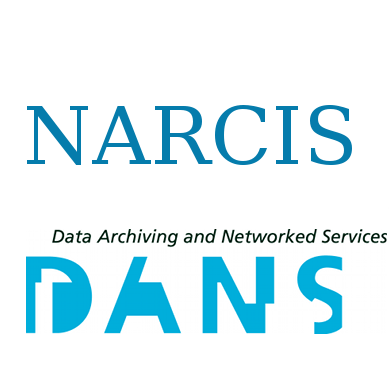Focal point
Location
National Academic Research and Collaborations Information System (NARCIS) is the main Dutch national portal for those looking for information about researchers and their work. NARCIS aggregates data from around 30 institutional repositories. Besides researchers, NARCIS is also used by students, journalists and people working in educational and government institutions as well as the business sector.
NARCIS provides access to scientific information, including (open access) publications from the repositories of all the Dutch universities, KNAW, NWO and a number of research institutes, datasets from some data archives as well as descriptions of research projects, researchers and research institutes.
This means that NARCIS cannot be used as an entry point to access complete overviews of publications of researchers (yet). However, there are more institutions that make all their scientific publications accessible via NARCIS. By doing so, it will become possible to create much more complete publication lists of researchers.
In 2004, the development of NARCIS started as a cooperation project of KNAW Research Information, NWO, VSNU and METIS, as part of the development of services within the DARE programme of SURFfoundation. This project resulted in the NARCIS portal, in which the DAREnet service was incorporated in January 2007. NARCIS has been part of DANS since 2011.
DANS - Data Archiving and Networked Services - is the Netherlands Institute for permanent access to digital research resources. DANS encourages researchers to make their digital research data and related outputs Findable, Accessible, Interoperable and Reusable.
Members:
Resources
Displaying 471 - 475 of 1863Ecologische ontwikkeling in een voor menselijke activiteiten gesloten gebied in de Nederlandse Waddenzee : tussentijdse analyse van de ontwikkeling in het gesloten gebied invergelijking tot niet-gesloten gebieden, vijf jaar na sluiting
In dit project is de ontwikkeling van het ecosysteem in een voor menselijke activiteiten gesloten gebied (Referentiegebied) gevolgd en vergeleken met een gebied waar zulke activiteiten wel toegestaan zijn (controle-gebied). Hierbij is vooral gekeken naar benthische mariene fauna en de bodembedekking (schelpengruis) in de geul, maar ook litorale en sublitorale mosselbanken, de zeehondenpopulatie en de vogelvoorkomens zijn meegenomen.
Betrokkenheid van Nederlandse bedrijven bij transnationale grondverwerving en pacht : een eerste verkenning
Vooral sinds de scherpe stijging van de voedselprijzen in 2007/2008 is er een sterk toegenomen belangstelling van landen en bedrijven om grond in andere landen in gebruik te nemen voor de productie van landbouwgewassen, zowel voor voedselgewassen als voor biobrandstoffen. Het gaat om zeer grote oppervlaktes cultuurgrond, met soms vergaande consequenties voor de plaatselijke bevolking. Naast China en de olierijke maar ‘voedselarme’ landen in het Midden Oosten zijn ook Europese bedrijven actief op dat terrein.
Sampling efficiency of national, EU and global stratifications : exploring by using CL2000
Stratification, dividing the statistical population into less heterogeneous subgroups before sampling, can help improve sampling efficiency by improving representativeness and reducing sampling error. This report explores the added sampling efficiency that is achieved by using the European Environmental stratification for estimating the area covered by the 25 Corine Land Cover (CLC) categories occurring in the semi-natural and managed terrestrial habitats of the wider-countryside.
Effect of vegetation cover and transitions on regional wind erosion in drylands
Wind erosion is a critical environmental problem that threatens mainly the arid and semi-arid regions of our planet. Usually this problem is associated with desertification, poverty and other environmental and socioeconomic problems. Wind erosion causes the loss of fertile topsoil, and has a negative effect on agricultural production and on human health. When conditions favorable for wind erosion are present, the process can cause large scale environmental disasters like the Dust Bowl in the USA in the 1930s.
Myths in Land Degeradation and Development
Water erosion is the most important degradation process of the 10 degradation processes distinguished by the European Union. The impact of rain drops on the soil surface causes splash of soil particles


